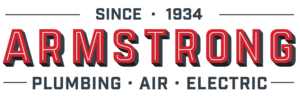
The importance of air filtration in your home can not be overstated. For starters, clogged or dirty air filters can cause your heating and cooling system to operate improperly, leading to potential system damage and/or replacement. More importantly, air filters help enhance indoor air quality (IAQ), which is a key component to your family’s good health. So, air filter maintenance should be performed regularly.
Fortunately, when it comes to simple, do-it-yourself HVAC maintenance, it doesn’t get any easier than taking care of your air filter. Aside from changing air filters regularly, you can test your filter’s efficiency at removing pollutants, allergens and other particles from your home with a simple test. First, place your current air filter horizontally. Pour common table salt through the filter and note how much passes through the filter. More than a granule or two means your filter will not adequately trap dust particles or pollutants of similar size. Your system may need a new filter or an upgrade to a more efficient model.
So, what types of filters are best at enhancing IAQ? The American Society of Heating, Refrigerating and Air-Conditioning Engineers (ASHRAE) uses a rating system called the minimum efficiency reporting value (MERV). MERV ratings range from 1 (lowest) to 20 (highest), and are based on the following criteria: the ability of the air filter to trap and remove particles and resist airflow and the filter’s estimated life expectancy
Here are the three main types of air filters and their MERV ratings:
- Flat-panel fiberglass. These filters are made up of layers of fiberglass fibers. They are disposable and usually come with a rating of 1 to 4. These inexpensive filters have a medium efficiency rating for collecting larger airborne particles and a lower rating for capturing smaller dust, dander and bacteria particles.
- Pleated polyester. These filters are normally more efficient than fiberglass and have a rating of 5 to 13. The pleats create more surface area to capture smaller air particles and pollutants.
- High-efficiency particulate air (HEPA). The Occupational Safety and Health Administration recognizes HEPA as the top filter for removing air particles and pollutants and enhancing IAQ. HEPA filters are rated from 17 to 20, but their size is a drawback. As most residential heating and cooling systems are not built to accommodate HEPA filters, retrofitting your furnace will likely require the services of an HVAC professional.
Regardless of filter type, remember that it is always a good idea to regularly replace your old filter. Determine the proper size, locate the filter compartment or slot, slide out the old one and properly dispose of it. Determine your system’s airflow direction and install the new filter.
For more air filter efficiency information or for a fall tune-up, call your friends at Armstrong Plumbing, Air & Electric today.







